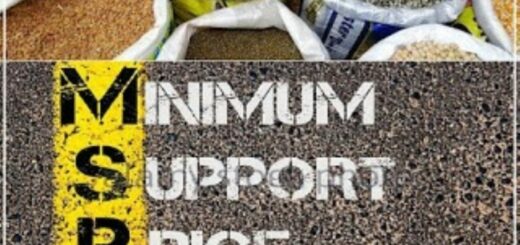National Current Affairs – UPSC/KAS Exams- 01st May 2019
Portal to register e-vehicles
Topic: e-Governance
In News: Maharashtra government’s new web portal, thrown open lrecently for the registration of battery-operated vehicles, expects to receive about 1,00,000 applications under the State Electric Vehicle Policy.
More on the Topic
- A gateway for sanction and disbursement of fiscal incentive to the buyers of Electric Vehicle (EVs), the portal is designed to accommodate one lakh applications including those of 70,000 battery-operated two-wheelers, 20,000 three-wheelers, and 10,000 four-wheelers. The portal could also take registration of 1,000 battery-operated buses.
- As per the policy approved by the State Cabinet , an enabling environment is being created for the manufacture of nearly 5,00,000 EVs in the next five years.
- The government proposes exempting e-vehicles from road tax and registration charges.
- In addition, 15% subsidy will be provided to owners of first 1,00,000 EVs registered which would be ₹5,000 for two-wheelers, ₹12,000 for three-wheelers, and up to ₹1,00,000 for the four-wheelers.
- As per the policy, not only vehicles but even charging stations set up on public and private parking lots, fuel pumps, bus and railway stations and approved by local planning authority will be considered for grant of capital subsidy of 25% up to ₹10 lakh. As part of this, first 250 commercial public EV charging stations will be considered for assistance.
Source:The Hindu
ASI unearths treasure at U.P. site
Topic: Art and Culture
In News: The Archaeological Survey of India’s (ASI) ongoing excavation of 4,000-year-old burial sites in Uttar Pradesh’s Sanauli has unearthed underground “sacred chambers”, decorated “legged coffins” as well as rice and dal in pots and animal bones buried with the bodies.
More on the Topic:
- Three chariots, some coffins, shields, swords and helmets had been unearthed, pointing towards the existence of a “warrior class in the area around 2,000 BCE.
- This is different from Harappan culture. It is contemporary to the last phase of the mature Harappan culture. These findings are important to understand the culture pattern of the Upper Ganga-Yamuna doab.
- In one of the burial pits, the excavators found a wooden legged coffin that was decorated with steatite inlays with a female skeleton. The pit also contained an armlet of semiprecious stones, pottery and an antenna sword placed near the head.
- Another area of the site included remains of four furnaces with three working levels and the “overall ceramic assemblage has late Harappan characters.”
Mains Question:The ancient civilization in Indian sub-continent differed from those of Egypt, Mesopotamia and Greece in that its culture and traditions have been preserved without a breakdown to the present day. Comment.
Source: The Hindu
Article 239A
Topic: Polity and Governance
In News: The Madras High Court on Tuesday ruled that the Lieutenant-Governor (L-G) of Puducherry could not interfere with the day-to-day administration of the Union Territory when an elected government was in place. The court said incessant interference from the L-G would amount to running a “parallel government.”
More on the topic
- The judge made it clear that government secretaries were bound to take instructions from the Ministers and the Council of Ministers, headed by the Chief Minister.
- The Court pointed out the significant differences in the powers conferred on the legislatures of Puducherry and Delhi under Articles 239A and 239AA of the Constitution.
- In his judgement that held that the Lieutenant-Governor (L-G) of Puducherry could not interfere with the day-to-day administration of the Union Territory when an elected government was in place.
- Though Article 239AA imposes several restrictions on the legislature of Delhi, no such restrictions had been imposed explicitly in the case of Puducherry under Article 239A.
- The above Article symbolises the supremacy of the Legislature above the Administrator in case of the Union Territory of Puducherry.
- The judge held that government secretaries of the Puducherry administration were required to report to the Council of Ministers headed by the Chief Minister on all official matters.
- The secretaries are not empowered to issue orders on their own or upon the instructions of the Administrator.
- Referring to the provisions of the Government of Union Territories Act, 1963, the judge said Section 44 of the Act states that there shall be a Council of Ministers in each Union Territory to aid and advice the Administrator who shall act in his/her discretion only in so far as any special responsibilities were concerned.
- However, since the Act does not specify the ‘special responsibilities’ in relation to which the L-G could apply his/her discretion, “it is the bounden duty of the Administrator and the Council of Ministers to avoid logjam and facilitate the smooth functioning of the government in public interest, leaving the political differences apart.
Source: The Hindu
Army invokes emergency powers
Topic: Internal Security
In News: The Army is in the process of procuring Spike-LR Anti-Tank Missiles from Israel and Igla-S Very Short Range Air Defence Systems (VSHORAD) from Russia through a set of new financial powers for emergency procurements sanctioned by the Defence Ministry earlier this month.
More on the Topic
- After the Pulwama attack, the government has given emergency powers to the armed forces for buying equipment to enable them to fight wars on the western border with Pakistan.
- Under the latest emergency financial powers, armed forces have been given a free hand to procure equipment worth upto ₹300 crore on a priority basis.
- The government also relaxed certain rules to cut delays in military purchase like allowing the three services to procure required weapons and equipment from a single vendor.
- Entirely new systems not in use can also be procured under the new powers.
- For the procurement under the emergency orders, the forces need not even take concurrence of the Integrated Financial Advisor from the defence finance department.
Source: The Hindu
Drug-resistant diseases could kill 10 million a year by 2050
Topic: Health
In News: UN Ad Hoc Interagency Coordinating Group on Antimicrobial Resistance has warned that Drug-resistant diseases could cause 10 million deaths each year by 2050.
More on the Topic
- By 2030, antimicrobial resistance could force up to 24 million people into extreme poverty.
- Currently, at least 7,00,000 people die each year due to drug-resistant diseases, including 2,30,000 people who die from multidrug-resistant tuberculosis.
- More and more common diseases, including respiratory tract infections, sexually transmitted infections and urinary tract infections, are becoming untreatable; lifesaving medical procedures are becoming riskier, and food systems are getting increasingly precarious.
- Without investment from countries in all income brackets, future generations will face the disastrous impacts of uncontrolled antimicrobial resistance. Countries need to prioritise national action plans to scale-up financing and capacity-building efforts.
- Countries must put in place stronger regulatory systems and support awareness programs for responsible and prudent use of antimicrobials by professionals in human, animal and plant health and invest in ambitious research and development for new technologies to combat antimicrobial resistance.
Antimicrobial resistance
- Antimicrobial resistance is the ability of a microbe to resist the effects of medication that once could successfully treat the microbe. The term antibiotic resistance is a subset of AMR, as it applies only to bacteria becoming resistant to antibiotics.
- Resistant microbes are more difficult to treat, requiring alternative medications or higher doses of antimicrobials.
- These approaches may be more expensive, more toxic or both. Microbes resistant to multiple antimicrobials are called multidrug resistant (MDR). Those considered extensively drug resistant (XDR) or totally drug-resistant (TDR) are sometimes called “superbugs.”
Source: The Hindu
UNESCO Creative Cities Network (UCCN)
Topic: Culture
In News: A Proposal to add Srinagar as a city of Crafts and Folk Art under UCCN is on cards, it is to be noted that Jammu and Kashmir do not have any site or monument with the UNESCO inscription of a World Heritage Site.
More on the Topic
- The UNESCO Creative Cities Network (UCCN) is a project of UNESCO launched in 2004 to promote cooperation among cities which recognized creativity as a major factor in their urban development.
- The network aims to foster mutual international cooperation with and between member cities committed to investing in creativity as a driver for sustainable urban development, social inclusion and cultural vibrancy.
The Network recognizes the following creative fields
- Crafts and Folk Arts
- Media Arts
- Film
- Design
- Gastronomy
- Literature
- Music
- The overall situation and activities within the Network are reported in the UCCN Membership Monitoring Reports, each for a 4-year period for a particular city.
- The Network recognizes the concept of creative tourism, defined as a travel associated with creative experience and participation.
- So far three Indian cities as bee added to UCCN, they are as follows,
- Varanasi for Music
- Jaipur for Crafts and Folk Art
- Chennai for Music
- To become part of the network of 180 cities, where development is believed to be intricately linked to their creative traditions.
Source: The Hindu

















